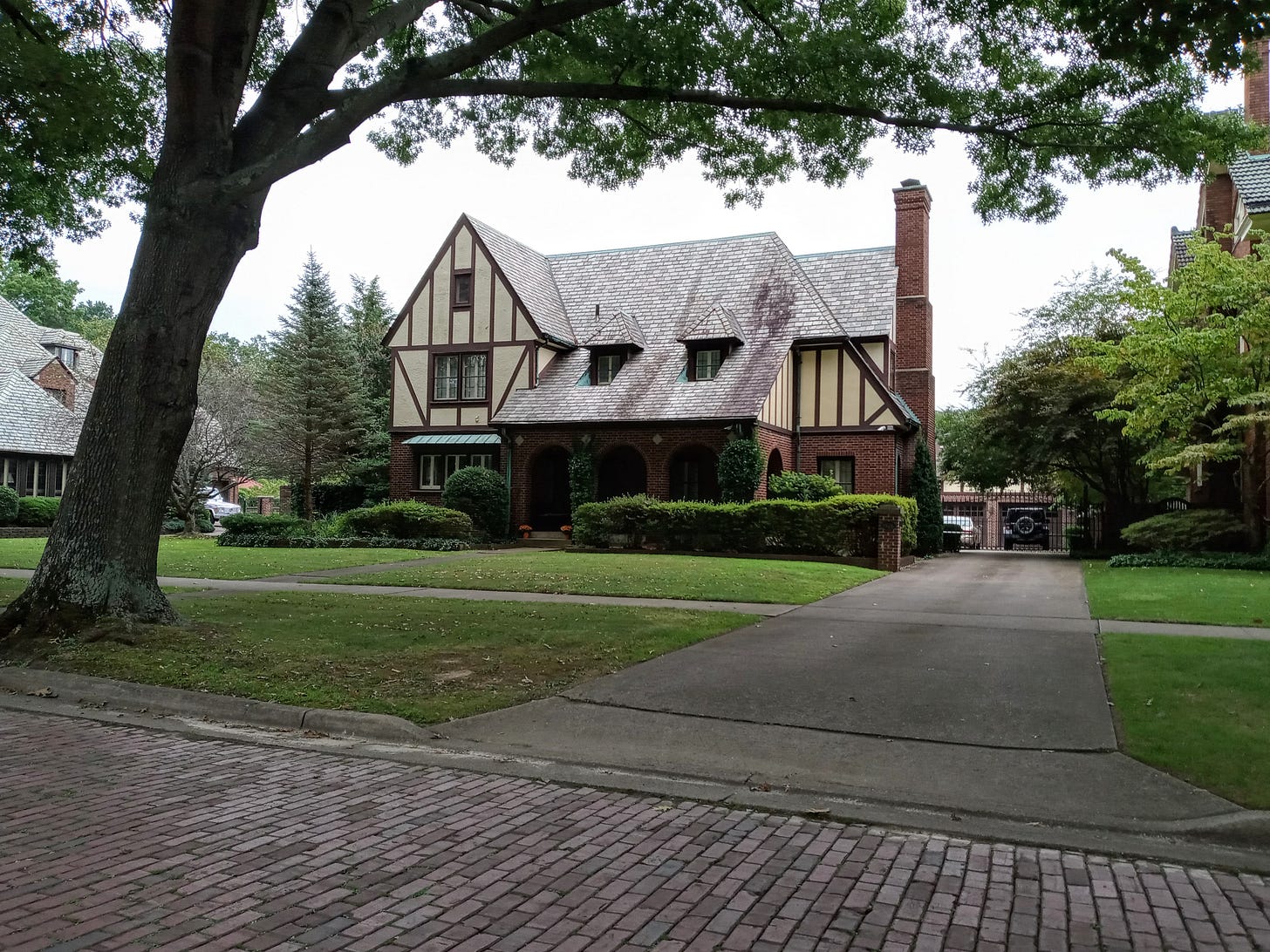PORTSMOUTH, OHIO — Henry T. Bannon was filled with nervous anticipation. “Knowing that the only relief I may have from the tenseness created by the impending flood is through the expression of my thoughts on paper,” he wrote.
Henry, 69, had thinning hair and a long face that featured a dark bushy mustache. He lived in a large Tudor-style house at 1926 Franklin Avenue in the Hilltop neighborhood. In his leisure time, he enjoyed writing and various literary pursuits, and was the author of at least two published works about regional history.
The Portsmouth Times would later say about him, “Always an avid reader of all types of literature, from the classics to history and fiction, he acquired a forceful, trenchant writing style of his own.”
In the present moment, perhaps with a pen in hand and later with a typewriter at his disposal, streams of words poured out of Henry. He knew the history of floods in Portsmouth. He knew much of it firsthand, having lived through the worst of them.
“Vividly do I recall the flood of 1883 (I was then sixteen), and each succeeding flood. Those of 1884 and 1913 were notable.”
Henry recalled how his family sheltered others.
“As waters were rising during the 1884 flood, Ike Young, an old [black man] who lived under the hill, asked my father whether he could move his family into the barn. Father told him to make himself at home and to bring his movables along. The first movable Ike moved was his flock of ducks!”
The Bannon family also helped flood refugees nearly thirty years later.
“During the 1913 flood an old [black] woman asked permission to move into the washhouse. ‘Come on,’ said [Henry’s mother]. The first article that woman brought up the hill was a setting hen on her nest in a box; and the eggs all hatched, and the chicks duly returned whence they came when the water subsided.”
Then Portsmouth began a new era of protection from devastating floods.
A Life in Law and Politics
The eldest son of Judge James W. Bannon, Henry Towne Bannon was born on June 5, 1867, in Portsmouth. After receiving degrees at Ohio State University and University of Michigan, Henry followed his father into the law, joining the family firm founded in 1826 by Supreme Court of Ohio Judge William V. Peck, later to become Bannon & Bannon.
Henry became a member of the Ohio bar in 1891 and was Scioto County prosecuting attorney from 1897 to 1902.
A Republican, he would recall his election to city council, representing the 4th Ward, to be among his “happiest political adventures.”
Democrats had ruled the 4th Ward for years, Henry remembered. The election was thought to be “in the bag.” Bannon rose early on election day. He took voters to breakfast and then to the polls, “to the astonishment of the democratic workers,” who had their own plans “to get out the vote” but instead saw Bannon employing the same tactic.
An earlier election did not have the same happy result. In a run for prosecuting attorney, Henry prevailed in only one precinct in Scioto County. He claimed the race was lost when he wouldn’t supply two gallons of liquor to precinct workers.
Henry ran for Congress and won, becoming the Representative of Ohio’s 10th District from 1905 to 1909. Not seeking an additional term, he returned to Portsmouth, where he continued to practice law and served as a director of the Selby Shoe Company and three financial institutions. He also served for many years as the local counsel of the Norfolk & Western and Chesapeake & Ohio railroads, having a hand in their regional expansion.
However, Henry’s interest in national politics did not wane after his return to Portsmouth. He was a delegate to Republican National Conventions held in 1924, 1928, 1932 and 1936. It’s safe to say he was sorely disappointed in the results of the most recent elections won by President Franklin Roosevelt, whom Henry considered to be a betrayer of his class, among other things.
The Portsmouth Times would describe Bannon as a “nationally known lawyer, author, political leader and railway pioneer.”
The newspaper would add, “He could say more in fewer words than most of the literary professionals.”
But January 1937 was not one of those times.
Henry T. Bannon had a lot to say about what was coming. It would fill more than 20 typewritten pages in a letter to his granddaughter at the University of Michigan.
“For twenty-four years the flood wall had kept flood waters out of our city,” he wrote in the opening paragraph. “Therefore, we now have on the scene a generation unable to realize what the next few days must bring forth.
“Today, the people have not the slightest realization of the magnitude of the impending disaster.”
Thank you for reading. If you liked this installment, please click the 🤍.
Access the archives for the full chronology of The 1937 Flood Journal. Find a list of sources here.
More family stories. Read my other Substack publication, FRIED BOLOGNA:







So fascinating! I learn so much from your research and writing. Thank you!
Thanks Neil for another good read.